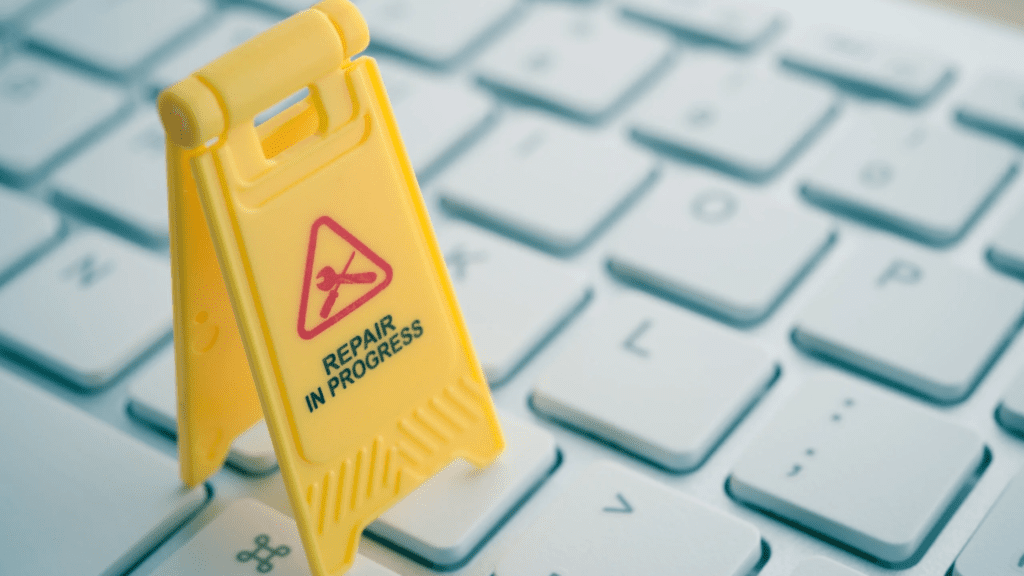In today’s fast-paced digital world, laptops have become our go-to companions for work, study, and entertainment. But like any technology, laptops are not immune to wear and tear. Knowing which hardware failures are most common—and how to spot them—can save you time, money, and a whole lot of frustration.
Whether you’re dealing with a flickering screen, a sluggish system, or a completely unresponsive device, understanding the problem is the first step toward a solution. In this guide, we’ll break down the most frequent hardware issues, when to seek professional Laptop Repair Services, and how to extend your device’s lifespan.
1. Laptop Screen Failures: Cracks, Flickers, and Blackouts
The screen is one of the most vulnerable parts of a laptop, and unfortunately, also one of the most common components to fail. Users often encounter issues like:
- Cracked or broken screens (usually due to accidental drops or pressure)
- Flickering or dim screens caused by faulty cables, GPU issues, or backlight problems
- Dead pixels or complete blackouts, indicating more serious hardware failure
In most cases, laptop screen repair is possible and significantly cheaper than replacing the entire device. However, ignoring early signs—like occasional flickers or dead zones—can worsen the issue over time.
Tip: Avoid pressing hard on your laptop lid and invest in a protective case when traveling.
2. Overheating and Cooling System Failure
Does your laptop feel unusually hot, or do you hear the fan constantly running? Overheating is a serious concern that can damage the motherboard, processor, or hard drive.
Common causes include:
- Dust accumulation in the cooling vents
- Faulty or broken fans
- Dried-out thermal paste between the CPU and heatsink
An overheated system not only slows performance but also shortens the lifespan of internal components. Routine cleaning or servicing by professionals offering Laptop Fan Repair Services can prevent thermal damage before it occurs.
3. Battery Issues and Charging Port Failures
Battery problems are among the top reasons users seek laptop repairs. Symptoms include:
- Laptop shutting down abruptly
- Battery not charging even when plugged in
- Swollen or physically deformed battery packs
Often, these issues are accompanied by charging port failures, where the internal jack loosens or gets disconnected from the motherboard. In such cases, replacing the port or battery is usually required.
Did you know? Continuing to use a faulty charging port can short your motherboard—resulting in much costlier repairs.
4. Keyboard Malfunctions: Sticky, Dead, or Repeating Keys
Spilled coffee, dust, or simple wear and tear can all affect your keyboard. The most reported issues include:
- Sticky or unresponsive keys
- Keys typing twice or not at all
- Entire rows not working, often pointing to a connection issue
Sometimes, replacing individual keys solves the problem. In other cases, especially with newer models, replacing the entire keyboard may be necessary.
5. Hard Drive Failures: Clicking Sounds or Missing Data
The hard drive is where your files, applications, and operating system reside. If you hear clicking noises, experience frequent crashes, or notice files disappearing, you might be facing hard drive failure.
There are two main types of hard drives:
- HDDs (Hard Disk Drives): More susceptible to physical damage
- SSDs (Solid State Drives): Faster and more durable but can fail from data corruption or overuse
Early signs should never be ignored. Back up your data immediately and consult a professional technician before it’s too late.
6. Motherboard Damage: The Costliest Repair
The motherboard is essentially the heart of your laptop. If it fails, you’ll likely experience:
- No power at all
- Frequent random shutdowns
- Unusual error messages on boot
Motherboard repairs can be complex and are often considered the most expensive fix. However, in cases where replacement is needed, a thorough diagnosis by a trusted Laptop Repair Services provider can help you weigh the cost vs. buying a new device.
7. Wi-Fi and USB Port Failures
Connectivity issues—such as your laptop not detecting Wi-Fi networks or external devices—could point to port or adapter issues. Causes include:
- Damaged network adapters
- Corrupted drivers
- Loose or broken USB connectors
These are relatively affordable repairs but require a technician’s tools to inspect the internal circuits.
How to Know When to Seek Professional Help
While some users feel confident enough to replace RAM or clean out a fan, most hardware issues should be handled by professionals. Attempting to fix things without proper tools or knowledge may void warranties or worsen the problem.
A good Laptop Repair Services provider will:
- Offer a diagnostic check
- Provide transparent pricing
- Use genuine replacement parts
Ensure data safety during repairs
Preventive Maintenance Tips to Extend Your Laptop’s Life
- Keep liquids away from your device
- Don’t block air vents
- Shut down properly instead of forcing it off
- Use a surge protector when charging
- Perform regular software updates and antivirus scans
These simple habits can help you avoid many common hardware issues and ensure a longer life for your device.
Final Thoughts
Understanding the common hardware failures in laptops is key to preventing costly repairs and sudden device failures. From laptop screen repair to internal component fixes, timely action can save both data and dollars.
Whether you’re facing a screen issue, a dead battery, or a complex motherboard fault, professional help is just a call away. If you’re looking for trusted Laptop Repair Services, visit
Digimob Phone Repair is committed to quality repairs, genuine parts, and fast turnaround times—helping you get back online with peace of mind.



